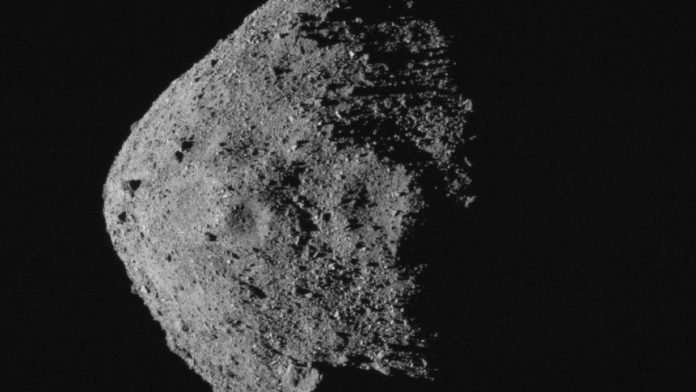After last week’s extraordinary achievement of grabbing a sample of rock and dust from an asteroid speeding through space more than 200 million miles from Earth, NASA risked losing the collected material when it was discovered that some of it was escaping out of the spacecraft’s collector head.
The leak from the sample collector was the result of a gap in the collector’s lid that had become wedged open by some of the larger pieces of material that it had gathered.
The good news is that NASA has now managed to safely stow the remaining material — thought to exceed the target collection weight of 2 ounces (60 grams) — inside the Sample Return Capsule, preventing the loss of any more material.
“To secure the capsule, the spacecraft closed the lid and then fastened two internal latches,” NASA said in an article describing the events of the last few days. “As of late October 28, the sample of Bennu is safely stored and ready for its journey to Earth.”
NASA’s OSIRIS-REx spacecraft will begin its long trip back home in March 2021. The capsule and its all-important contents should land on Earth in September 2023, after which the rock and dust will undergo analysis in a lab.
Scientists believe Bennu formed in the first 10 million years of our solar system’s existence — over 4.5 billion years ago — and so the collected sample could tell us more about how it came to be, and perhaps reveal new information about the origins of life.
Bennu is 500 meters in length (about the size of the Empire State Building) and is hurtling through space at a speed of about 63,000 miles per hour — while also rotating.
NASA’s OSIRIS-REx spacecraft arrived close to the asteroid in December 2018 after launching from Cape Canaveral in Florida two years earlier.
Last week, the spacecraft embarked on the challenge of gathering the sample, which involved descending to the planned collection site, known as Nightingale.
In the final moments before touchdown, the spacecraft performed a maneuver to slow its descent and match the asteroid’s rotation at the time of contact.
“It then continued a treacherous, 11-minute coast past a boulder the size of a two-story building, nicknamed ‘Mount Doom,’ to touch down in a clear spot in a crater on Bennu’s northern hemisphere,” NASA said. “The size of a small parking lot, the Nightingale site is one of the few relatively clear spots on this unexpectedly boulder-covered space rock.” A robotic arm was then able to grab a sample of rock and dust (check out these amazing images of the procedure) before the spacecraft quickly moved away from the asteroid.
While the collection process was deemed a success, the leak threatened the loss of some, or possibly most, of the material. But NASA’s confirmation that it has managed to secure the sample is the best possible news for the mission team, as well as the scientists who are eagerly waiting to analyze the material.
Grabbing a sample from an asteroid was a first for NASA, although a similar maneuver has been performed twice in recent years by JAXA, Japan’s NASA equivalent.





























